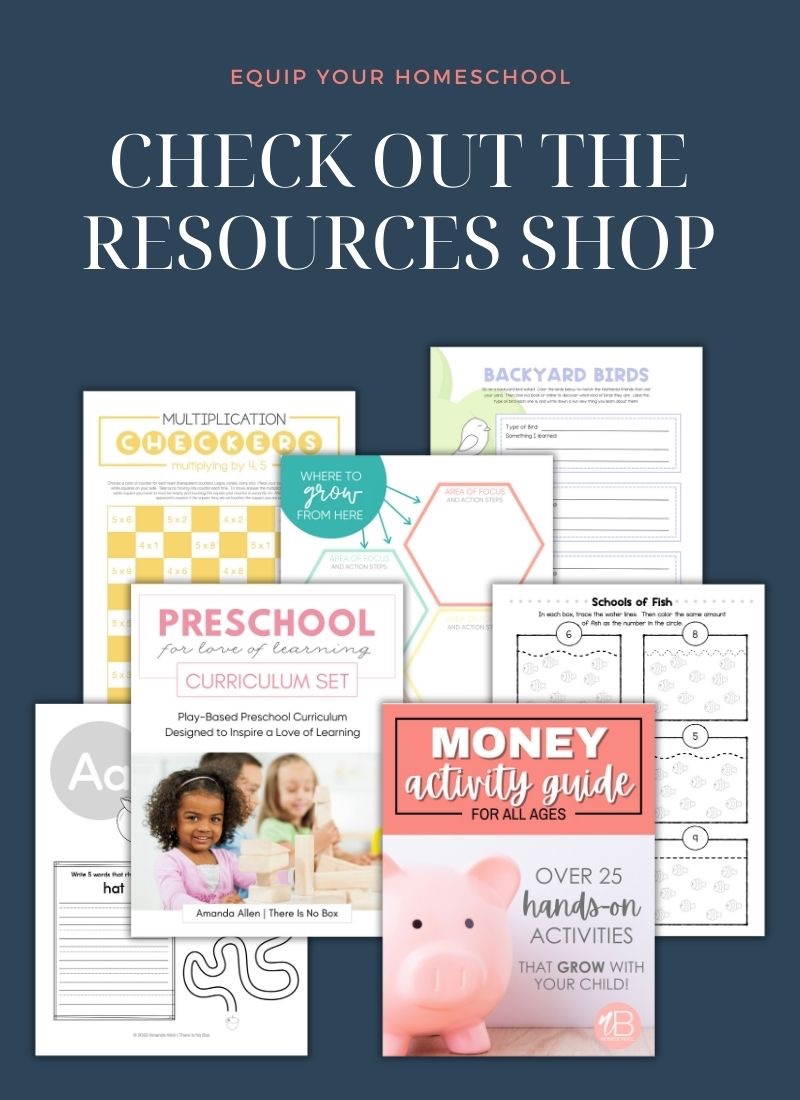Practical Tips for Successful Delight-Led Learning

Research has shown that learning occurs best when children are active, engaged, and building meaningful connections to their lives. There is nothing quite as powerful as curiosity and interest when it comes to igniting a passion for learning.
With a delight-led approach, the majority of the decision and timing for what a child learns follows the child’s interest level. Because the topic is something that they are already curious about, they are much more engaged with what they’re learning, and retain the information at a higher level because it is meaningful to them.
It’s a great idea, right? Yet the practicality of the approach is less defined than what we’re typical comfortable with.
I’ve often heard questions from mamas like:
- How do I know what to teach them? They don’t seem to be interested in anything.
- All my son wants to do is play video games all day. If we’re doing delight-led learning, does that mean I have to let him sit and play?
- I asked my child what they want to learn about and they said, “I don’t know.” Now what?
- It seems like we’re not doing anything! Should we abandon this idea?
Delight-led learning is not a hands-off, “do what you want” approach. Done well, this homeschool style provides an environment where your children learn so much more than you expected, and their everyday experiences become rich with curiosity, discovery, and creativity.
“But how do we get there,” you ask?
Here are three simple and effective ways to get the most out of your days with delight-led learning.
Practical Tip #1: Play
Play is doing something for the enjoyment of doing it as opposed to the outcome of doing it. I recommend utilizing both structured and unstructured play.
Unstructured Play is open-ended and leaves almost everything up to the imagination, creativity and curiosity of the child.
Structured Play includes activities with a directed focus, though much of the actual learning happens through self-inspired ingenuity within that focus.
Both are incredibly beneficial, and together they create a balanced approach to learning.
Examples of what this looks like:
Activity: Legos
Unstructured Play: Free play. Build whatever you want.
Structured Play: Lego Challenges where students build something within a defined set of standards.
Activity: Money
Unstructured Play: Kids get out their piggy banks to count, observe, sort (etc) what is inside.
Structured Play: Create a store for items or snacks and give each a price tag. Allow your child to purchase items of choice with play money.

Practical Tip #2: Equip
Pay attention when your child is engaged in unstructured play and you will begin to notice a couple of things:
- You will notice areas that they tend to gravitate towards.
- You will notice how your child best process information (also known as learning style).
Within these contexts, guide them to reliable information and resources that work well with their learning style. Additionally, capitalize on every opportunity to learn with these suggestions:
- Demonstrate how to compare and think about things critically.
- Ask a lot of questions.
- Take time to answer their questions. Model learning by working together to discover answers you don’t know.
- Inspire creativity and imaginative thinking as much as possible.
Examples of what this looks like:
- Leaving them invitations to learn
- Enrolling them in classes, clubs, activities, etc that pique their interest or play to their strengths
- Guiding them to quality information on topics of interest (this could include videos, books, online courses, podcasts, hands-on activities, and more)
- Asking them about what they’re learning and/or what they’re interested in. If they’re showing interest in or telling you about something, engage in the conversation. Listen, ask questions, and encourage them to find out more about it.
Practical Tip #3: Explore
Let your children explore anything and everything that they are interested in! Exploring allows kids to study and analyze the world around them in a thoughtful and detailed way.
This simplicity of this is beautiful, and there is no limit to what your child can learn and experience through exploration.
Examples of what this looks like:
Explore Your Back Yard
- Catalogue plants, trees, birds, bugs and more
- Observe pollinators, spiders, wildlife
- Garden (vegetables, fruit trees, herbs, wildflowers)
- Plant a pollinator garden and register as a monarch weigh station
Explore New Places
- Learn about the history of your hometown or state.
- Go to an art museum or outdoor theatre performance.
- Picnic at a lake and take jars to scoop and observe lake water.
- Explore the habitats of lakes, rivers, ponds, deserts, prairie lands…wherever you go!
Explore New Ideas
- Try something you haven’t done before
- Look at something ordinary from a new perspective
- Do something common in an uncommon place or way.
The challenges that come with embracing a delight-led learning approach are worth the effort to overcome. These three practical tips will go a long way towards creating an environment where your children are always learning!



